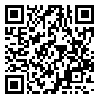Fri, Jul 18, 2025
[Archive]
Volume 3, Issue 1 (April 2007)
IJEEE 2007, 3(1): 21-30 |
Back to browse issues page
Download citation:
BibTeX | RIS | EndNote | Medlars | ProCite | Reference Manager | RefWorks
Send citation to:



BibTeX | RIS | EndNote | Medlars | ProCite | Reference Manager | RefWorks
Send citation to:
A. Kazemi, Sh. Jadid, H. Andami. Introducing a New Method for Multiarea Transmission Networks Loss Allocation. IJEEE 2007; 3 (1) :21-30
URL: http://ijeee.iust.ac.ir/article-1-24-en.html
URL: http://ijeee.iust.ac.ir/article-1-24-en.html
Abstract: (12857 Views)
Transmission loss allocation in very large networks with multiple interconnected
areas or countries is investigated in this paper. The main contribution is to propose a
method to calculate the amount of losses due to activity of each participant in the multi area
markets. Pricing of cross-border trades in Multi area systems is often difficult since
individual countries may use incompatible internal transmission pricing regimes, and they
are usually unwilling to disclose any sensitive information about their own systems.
A new methodology based on the loss formula concept for allocating electric losses to
generators and loads is presented in this paper. The only data required are the power flows
and characteristics of tie-lines and PV Ward equivalent model of area networks from border
nodes point of view. Proposed methodology is tested on the IEEE 118 node network which
is divided into three areas, each with a different internal transmission pricing methodology.
In the proposed methodology no information is required about individual loads, generations
or detailed internal networks. It is also shown to be simple, transparent and very fast and it
can deal effectively with multiple pricing policies.
Keywords: Loss Allocation , Multiarea Power Systems , PV Ward Model , Restructured Systems , Tie Line Losses
Type of Study: Research Paper |
Received: 2008/10/07 | Accepted: 2013/12/30
Received: 2008/10/07 | Accepted: 2013/12/30
| Rights and permissions | |
 |
This work is licensed under a Creative Commons Attribution-NonCommercial 4.0 International License. |







